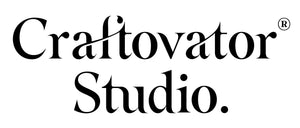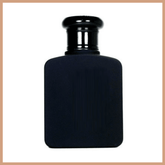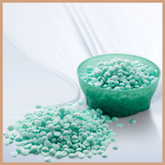How to Keep Track of Soap and Cosmetic Batches (with free download sheet!)
When considering starting your own soap or cosmetic business, the admin side of things can seem pretty daunting. In fact, it can sadly be enough to put some people off completely! Batch logging is one aspect of record-keeping that may seem overwhelming but we hope with our post today, you can create an easy system that meets the legal requirements of selling soap and cosmetic products.

What is Batch Logging for Cosmetics?
Batch logging is a requirement for the traceability purposes of an ingredient and a finished product. They form an very important part of your product information file (PIF file). Batch logging also makes up part of your GMP file (good manufacturing practice)
Today we will talk through how you can do your batch logging in a simple and easy way. You do not have to be tech savvy or know how to use programs like Excel.
Why do I need to keep batch logs when selling soap and/or cosmetic products?

The main purpose of giving your product a batch number and keeping a batch log is for traceability purposes.
Here’s an example (just one scenario out of many!):
Imagine making and selling a dozen face creams and the manufacturer of one of the oils you have used in your recipe recalls this oil due to finding that a batch had been contaminated. The manufacturer of this oil would provide you the batch number of the contaminated lot.
You will then have the job of working out if your face creams contain this contaminated batch of oil and if so, you will then need to trace which batch of your face creams you’ve made would need to be recalled as well.
This example shows why we must keep a record of all supplier batch codes for each ingredient used, as well as a batch code for the finished product. Without a batch log, you would never be able to trace the contaminated batch and it could put your customers at risk of using unsuitable products.
What information must we include in our batch log?

We’ve created a batch logging download document to keep it easy to keep track of your batches – you can download that just below. On the sheet, you’ll see what needs to be recorded in an easy-to-follow format which you’ll want to fill in for every batch you make.
Download our FREE Batch Logging Template here
Batch number
Every batch of a product you make will need a unique batch number. It doesn’t matter what number you give it as long as it can be used as an identifier for that particular batch.
The unique batch number given can be either numbers or letters or a mix of both.
You may choose sequential numbering systems – for example: 00001A, 00002A, 00003A
Or you may find using the date of the make easier – for example: 17012023A (made on the 17/01/2023 A=AM) or 17012023B (made on the 17/01/2023 batch A, B,C and so on)
The batch number will need to be recorded on your batch log as well as being on your product label.
General information

You will also need to record additional information along with your batch number on your log.
You will need:
Product name
The product name should match the labelling on your product. For example, Lavender & Chamomile Donkey Milk Soap or Raspberry Slushie Bath Bomb.
Product type
This describes the product itself. For example, Body Butter or Cold Process Soap.
Full recipe: Ingredients, Weight and Process
Your batch record should indicate every raw ingredient used as well as the weight of the product within the batch created as well as the process. The process would fall under Good Manufacturing Practice.
Supplier Details
The supplier details along with their batch numbers for each ingredient in your recipe as well as the batch number they list on their outer packaging of the raw ingredient. If you are using Craftovator’s products, you’ll see every product we supply has an individual batch number listed on the label.
Date made
The date you created this batch.
The following items are optional but would be good practice:
Yield
How many individual products your batch made. For example, 16 soap bars or 4 x 250ml pots.
Batch weight
How much your entire batch weighed once finished.
Waste
Was there left over product after you filled your moulds or jars? Weigh the remainder and keep note for the future.
Cure date
If you’re making cold process soaps, make a note of when the soap would be cured and ready for use or sale.
Results
Once you’ve made your batch, was there anything you need to note or is there an indication that you may need to change or adapt your recipe in the future? If not, you can simply make a note that the product came out as expected with no problems.
Costs
Take the full cost of each ingredient and divide it by the amount used within the recipe to get your ingredient cost. Note the full cost of the batch and divide again by your yield value to get to the cost of each individual product created.
When creating your batch log, you could also attach one of your product labels to the sheet for a second identity reference.
Recording all of the product information together like this will certainly help you keep your PIF file updated and means you are fully complying with the batch logging part of the cosmetic regulations.
Remember to download our new Batch logging template here!

We sell a number of Assessments (Cosmetic Product Safety Reports) which include recipe guides for a huge range of bath and body products. Why not see what you might sell next?








3 Comments
Hi, i guess the purpose of batch recording is to be able to trace faults back to the product to be able to for excample make a call back of the “bad product”. How is this done with soap? I mean, if you put the batch code on the packaging nobody saves this, but start to use the product, and there will be no chance to find out what the batch code was a little later….. hope you understand what I mean here, will be so happy to hear how you solve this :-) al the best Tove
I have been keeping my own records and found it a bit daunting, this is a much clearer
and easier to use system when i want to retrieve information. i file in batch date made order but could also file sequentially on product made. thank you this is a great help.
Thanks for the guide on products.
Leave a comment
All blog comments are checked prior to publishing